Fruition’s current online tree growing resources are focused on Apple Trees (and it is also true that Pears, Plums, Peaches, Apricots and Cherries require much the same site choice, planting, and basic care considerations!) On that note, we hope you'll enjoy Fruition's free full library of Growing Trees Resources. Also recommended are all books by the late Michael Phillips and the online resources at the New England Tree Fruit Management Guide. In the meantime, enjoy more Fruition tree growing resources:
Apple Tree Growing Guide
Fruit Q&Qs pre-recorded Webinar Library
and join us for future live Fruit Q&Q webinars here!
5 Keys to Establishing an Organic Apple Orchard & 5 Common Mistakes to Avoid
by Lauren Cormier
The joy of harvesting an apple is so many seasons in the making: After snowmelt the blossoms are buzzing with bees, tiny fruit swelling all summer and then harvesting that fruit, sweetness in hand, is so deeply nourishing beyond calories. In this era when sound bites are seven seconds and everything is so fleeting, deepening our relationships with ourselves and the world around us becomes a healing balm. Planting a few fruit trees for the seasons and generations to come may be one of the most radical acts of hope we can enact in our lifetimes.
Depending on whether we’re looking to plant a single tree or an orchard, the amount of maintenance will be quite different. There are challenges in growing fruit but the decisions made in the planning stage can help minimize the amount of work and maintenance needed in the long term. Choosing varieties and rootstock that are disease resistant can significantly reduce the hurdles that lie ahead.
If you’d love to receive our weekly organic orcharding email updates, join us here! In the meantime, here are some considerations for anyone thinking of planting a tree or orchard.
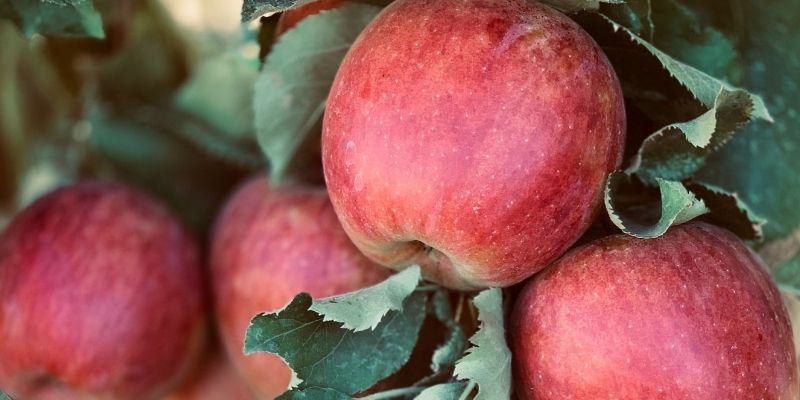
#1: Design for Easy Access
The closer the trees are planted to home, farm, and walking paths, the better care they will receive as a result of better visibility. If possible, plant where access for equipment and ongoing maintenance will be easiest. Imagine delivering mulch and compost to the tree as well as spraying, pruning, and picking. Avoid planting trees in far away places unless there is a plan to visit them frequently and take extra good care of them!
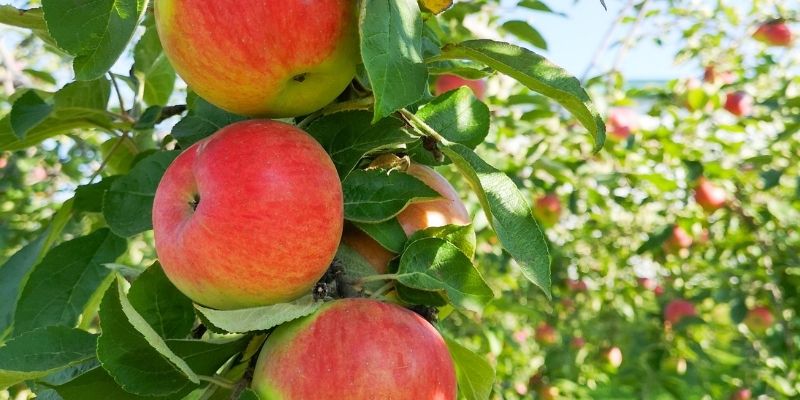
Not only are there many different varieties, but there are various kinds of rootstock to consider as well. Rootstock influence the vigor and size of a tree. These days, many orchardists are planting dwarfing or semi-dwarfing rootstock and growing much smaller trees than in the past.
Once the size of the trees has been established, spacing between trees and rows can be determined, keeping maintenance with accessibility in mind. Will the orchard be mowed with a tractor or a scythe? What type of equipment will be going between rows? Is an overhead canopy of intermingling branches the future goal? Or staked dwarfing trees with fruit that will remain within reach for decades to come? There are so many different types of orchards. Make a design and plan that will be just right for you.
#2: Start Small
When starting an orchard, it’s incredibly easy to bite off more than we can chew and plant more trees than we realistically have time to maintain. It pays off to plant fewer trees in the beginning and gradually increase rather than plant too much at once. They require a lot of work up front in their first few years when they’re small and vulnerable to borers, mice, deer, and porcupine. On top of pests that need to be kept at bay early on, each tree requires annual care to keep it weeded, mulched, and pruned. The better we take care of young trees, the healthier they will become and sooner they will bear their first fruit. If growing fruit is a hobby, keep it fun!
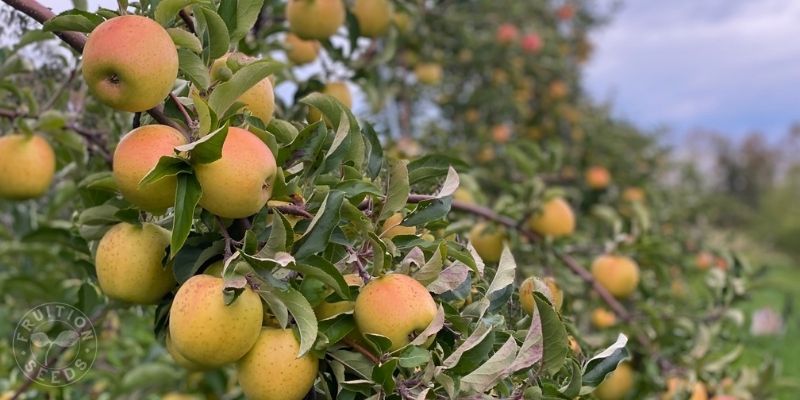
#3: Soil Testing is Everything
The soil test (here’s how!) is an important baseline for planting an orchard and whether there are mineral deficiencies to be addressed. Some elements, especially potassium, may need to be replenished when trees start to bear fruit. The essential macronutrients tested are calcium, magnesium, nitrogen, phosphorus, potassium, and sulphur. The test should also indicate pH level, percentage of organic matter, cation exchange capacity, and micronutrient levels.
When soil is too acidic, fruit trees are more susceptible to disease and fruit quality will not be optimal. Soil pH should be somewhere in the 6-7 range but a little higher than 7 is okay, too. If pH is low, then lime should be added annually until it has increased to the desired level. There are different types of lime that can be added depending on where magnesium levels fall on the soil test. Options include dolomitic limestone, calcitic limestone, carbonized limestone, and gypsum. Alkaline soil prevents a common disorder called Bitter Pit which affects the quality and storage potential of apples so plenty of calcium is a good thing!
Less fertile soil on ledge will need additional fertilizer, wood chips, and organic matter to build up humus and pH level. Where soil is lacking in organic matter, humates can be added at the time of planting to jump start biological activity as trees become established. If the soil test determines the soil is lacking in specific areas, then soil amendments can be broadcast on orchard rows before trees are planted or mixed with compost and top dressed around newly planted trees. Continue to test soil every 2-3 years after planting.
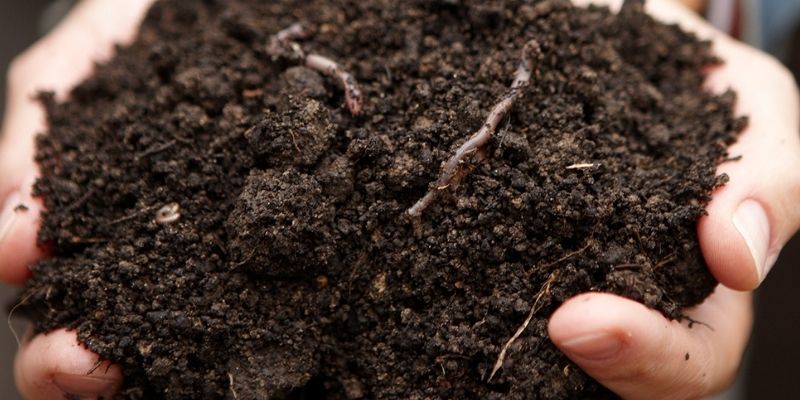
#4: The Right Variety Makes All the Difference
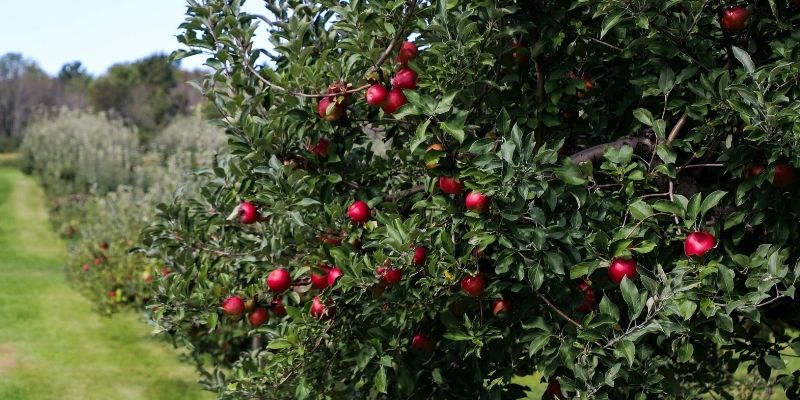
There are thousands of varieties that have developed throughout the world to a wide range of conditions and hardiness zones. Knowing the climate they originated in will help us determine if they will do well on our site. Ask around to orchardists in the area to get perspectives from those who may have firsthand, local knowledge. Some may do better in the north, and others in the south. Most temperate apple varieties require a certain amount of chill hours to break out of dormancy each spring that may not be possible to achieve in warmer regions. Many southern varieties aren’t as hardy in the north. If it’s an heirloom, where did it come from? Does anyone even know? With so many different kinds of apples, there’s almost certainly one, or many, for almost any location. Each variety has a different story to tell.
Stay tuned for the full story of each of Fruition’s organic fruit trees and how you can choose the best varieties for you!
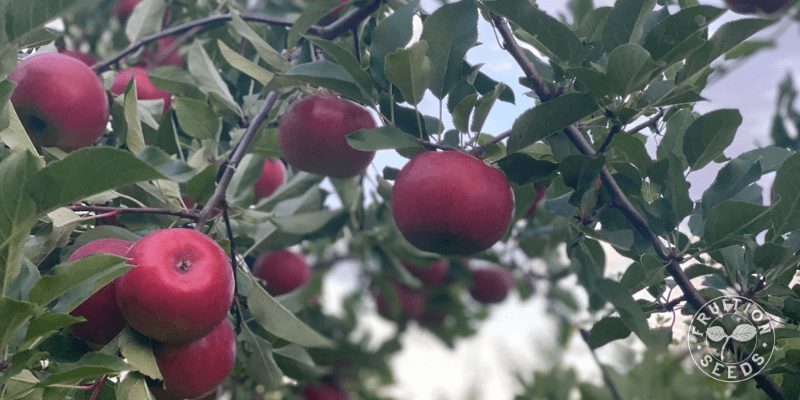
#5: Bring the Biodiversity!
Incorporating biological diversity and native plants in the orchard will increase bee populations and pollination for fruit production. Creating a more diverse ecosystem, where nature is allowed to co-exist with our agricultural endeavors, will also encourage predatory insects that keep pest populations in check. These insect friends of the orchard include syrphid flies, braconid wasps, and lady beetles. Wild hedges along the perimeter and companion planting with perennials through the orchard rows are highly beneficial and lets nature do the work. Think asters, goldenrod, viburnum, and dogwood!
Apples are self-unfruitful, meaning they need pollen from at least one other variety to produce fruit. In other words, a couple of Honeycrisp trees planted together will not pollinate each other. Fortunately, pollination for apple trees is not as challenging as it is for pears, plums, and cherries and there’s lots of crabapples and wild seedlings growing around to help get the job done. Almost any Malus will do, except the relatively few considered triploid which have sterile pollen. If you’re planting only one variety and there are no other apples within a 100′ radius, then it’s probably a good idea to plant at least one other variety somewhere nearby.
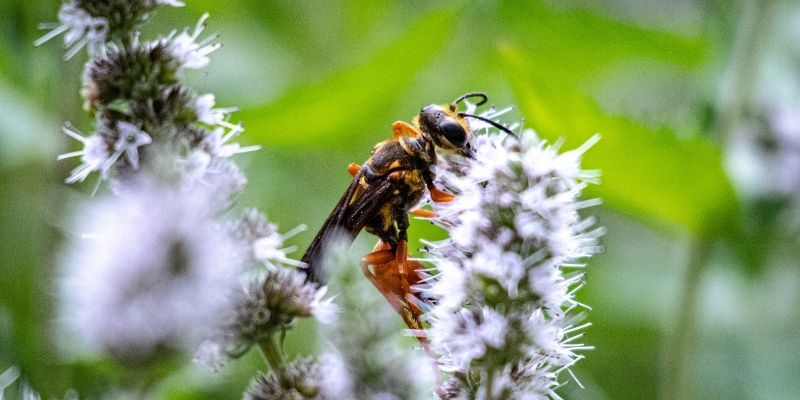
Common Mistakes to Avoid
#1: Near & Dear: Keep Fruit Trees Away from Deer!
Deer and porcupine are some of the most important considerations. Unless there is zero pressure from destructive animals, a rare occurrence indeed, trees should be fenced or individually caged for protection. If they are browsed, fruit production may be delayed and awkward branching could develop. If a porcupine finds the trees, they’ll do their best to strip them of bark and branches. Too many young fruit trees die traumatically each year under completely preventable circumstances. Installing a deer fence before an orchard is planted is an ideal scenario but for many of us, we’ll need to cage individual trees until proper fencing can be installed. We can stake metal panel fencing used for livestock or chicken wire around trees for protection. Plastic deer fencing can be used as well.
Mature trees on full size rootstock can sometimes exist in areas where there is grazing from livestock but even large fruit trees can eventually be damaged from rubbing and ripping off bark. Trees will require protection from livestock, even those on standard rootstock.
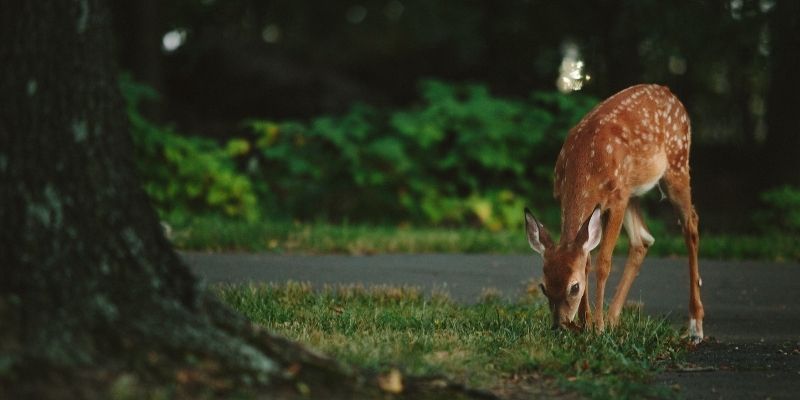
Not only do trees need to be protected from wildlife but some domesticated pets too. If there are dogs or puppies around that chew on stuff, keep them away from small trees. Think about all potential dangers and how the trees can be protected until they get larger.
Bear? Moose? They can be a nuisance too!
#2: Cold Spots
Planting on hillsides can be beneficial for orchards in colder locations. Sloping land drains frost to lower areas, away from trees. Late frosts can damage flowers in low areas, particularly varieties that bloom early. Identify where the fog settles and avoid planting in those spots when possible.
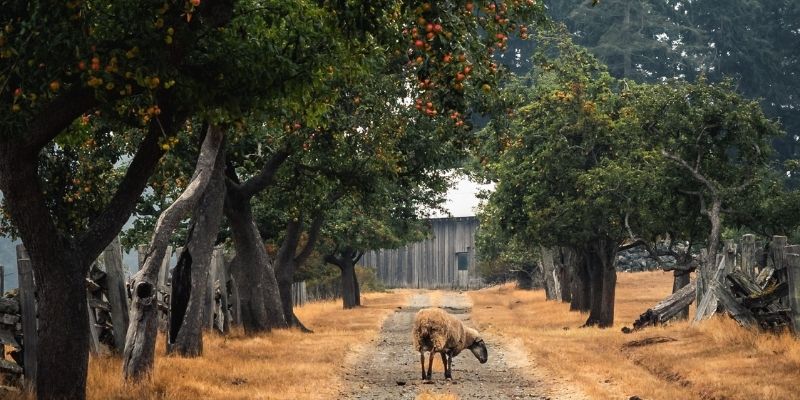
Trees on western slopes will have more exposure to harsh winter winds and may be more likely to develop southwest injury on bark. This happens when it thaws a bit on on a sunny winter afternoon as the sun becomes low in the sky, and then freezes suddenly as it becomes dark. Injured bark will eventually crack off and peel away, leaving an open wound for pathogens and borers to invade.
Planting on a northern orientation may help delay flowering in colder regions, an important consideration where late frosts can damage flowers that bloom early in the season.
Elevations between 100-300 ft above sea level are often great for orchards. These spots tend to have adequate air drainage and a buffer from more extreme temperatures of higher elevations and valleys.
#3: Avoid Eastern Red Cedar (Juniperus virginiana)
Eastern Red Cedar is an alternate host for a common fungus called cedar-apple rust. The rust affects the leaves and fruit of apple trees with bright reddish orange spots. Red cedar is native in some areas and has been introduced to others. It can infect apples with fungal spores within a few hundred yards or even several miles.It’s usually the closer plants which are a problem. In locations where red cedar can’t be removed, like a neighbors yard, there are resistant varieties like Liberty that can be planted.
Don’t be fooled by the common name, this isn’t a real cedar and shouldn’t be confused with Eastern White Cedar (Thuja occidentals) which poses no threat to apples whatsoever!
Cedar-apple rust needs red cedar and another plant in the rose family, such as an apple, hawthorn, serviceberry, or rose, to complete a lifecycle. When the fungal growths form on J. virginiana, they will sometimes look like small wooden beads, or galls, and other times like golf ball sized alien urchins with glowing red tentacles reaching into space. The visible symptoms on the apple leaf and fruit are bright reddish orange spots that blacken over time and may have teeny fungal tubes visible.
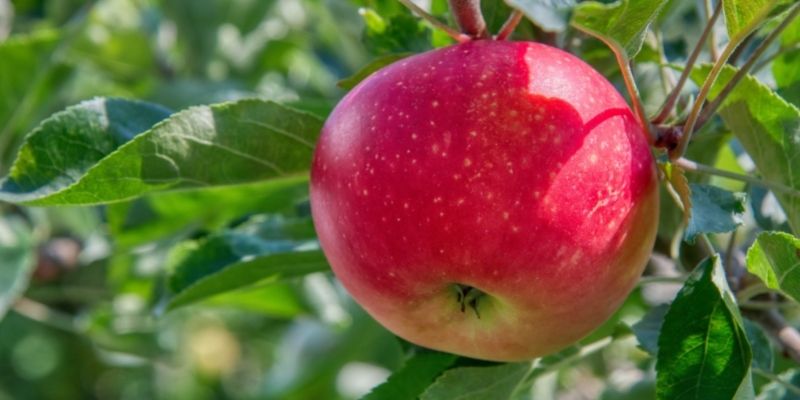
#4: Let There Be Light.
Avoid partial shade to full shade. Fruit trees need full sun and won’t fruit as well if they are in the shade part of the day. They’ll also be more prone to fungal conditions. Even a few hours less daylight can have a negative impact. Are there any buildings or tall deciduous trees nearby that will block sunlight?
Apples can be planted on different exposures as long as they receive full sun all day. They do especially well on a southeastern exposure with plenty of morning sunlight to dry off dew earlier in the day. The earlier in the day that the tree is able to dry out underneath, the less potential for fungal issues to build up.
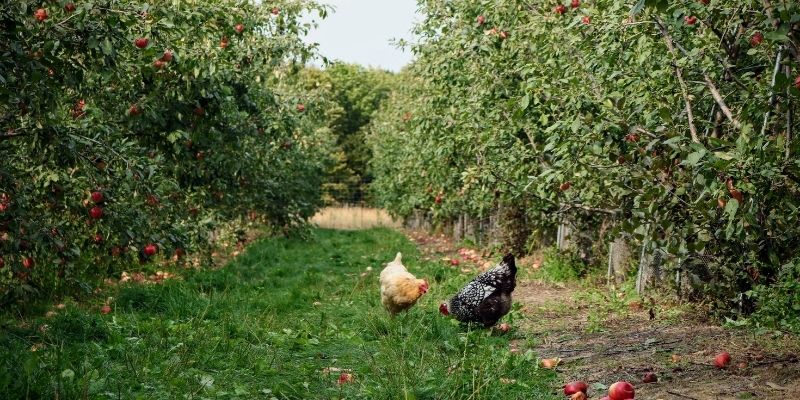
#5: Soggy Areas.
Is the soil wet or puddle up particular times of the year? Apples do best in soil that is well-drained year-round. If the site has standing water in the hole when planting, it’s probably too wet to be a good spot. Avoid soggy areas, wetlands, and low spots with poor drainage.
If there is heavy soil or signs of a high water table, then trees can be elevated between 1-3″ inches above soil grade to help with drainage. They will appear to be slightly mounded which will allow a larger portion of the root system to be free of standing water.
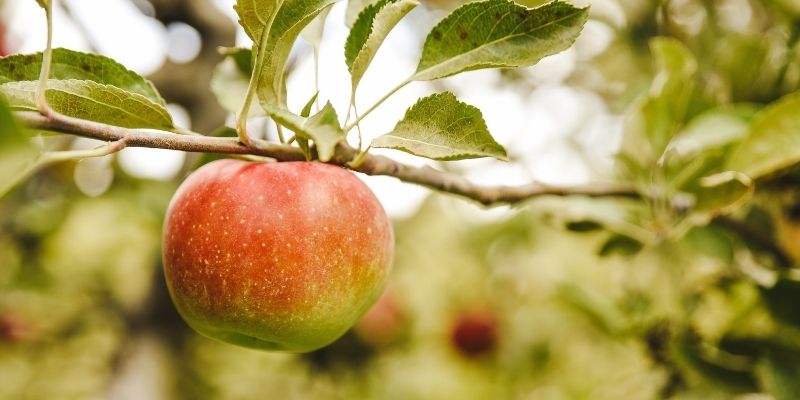
There is so much to consider when dreaming of and establishing fruit trees to savor for generations to come! As always, we’re honored to join you on the journey, Friends. And we’re not alone, as we join a legacy of humxns planting trees for thousands of years with thousands of hopes, fears and dreams. We’re right there with you!
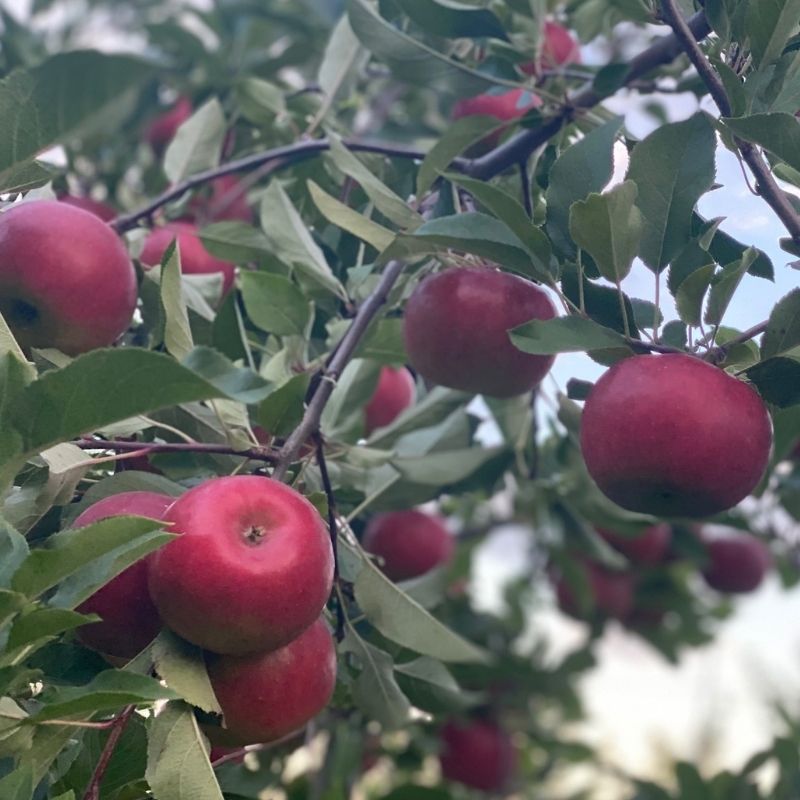
Be in the know:
Fruition's Fruit Tree Updates!
You'll receive seasonal tree insights & how-to's plus be the first to know about invitations to tree events on-farm and online!
Visit our newsletter website and subscribe to the 'Tree Updates' section
Enjoy our free online Apples & Organic Orcharding course and Tree Webinar Q&Qs Library in the meantime & don't be shy!
~When you join us, check your inbox for your welcome & access info! Stay tuned for our weekly organic gardening tips & inspiration, as well~
Sow Seeds & Sing Songs,

and the Many Beings of Fruition

